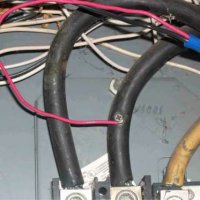BSSTG
Gold Member
Greetings,
2014 NEC applies
So we have a new residential service panel rated 200 amp with no main. Electrician says he can do it since it has no more than 6 breakers installed. I say no. The six breakers are not listed as service equipment. Also, in reading ex 3 to 408.36 would lead me to believe that would not be the intent of the Code. However, reading ex 1 to 408.36 would lead me to believe you can if it's not a split bus.
What am I missing?
BSSTG
2014 NEC applies
So we have a new residential service panel rated 200 amp with no main. Electrician says he can do it since it has no more than 6 breakers installed. I say no. The six breakers are not listed as service equipment. Also, in reading ex 3 to 408.36 would lead me to believe that would not be the intent of the Code. However, reading ex 1 to 408.36 would lead me to believe you can if it's not a split bus.
What am I missing?
BSSTG


